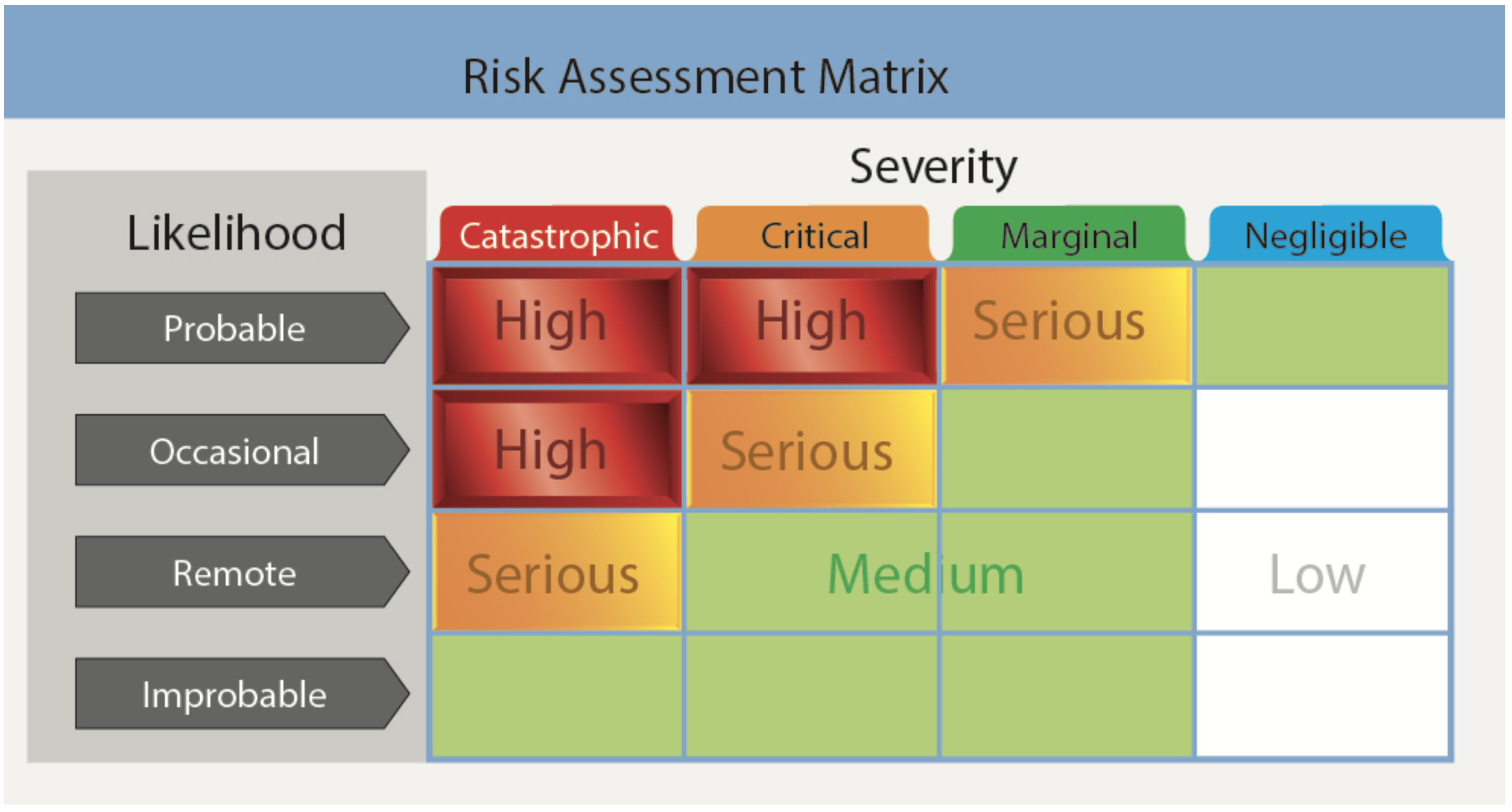Teaching Risk Management During Flight Instruction
The PAVE Checklist
- The PAVE checklist should be used to identify risk factors that need to be mitigated
- Pilot, Aircraft, EnVironment, and External Pressure are broad buckets
Aviation Instructor's Handbook pg. 10-2
When to Teach Risk Management
- At the start of the first lesson, starting with ground lessons
- Included in post-flight briefings of each flight
Assessing and Mitigating Risk

- Risk should be evaluated with their regard to severity (how bad is it if it occurs), and likelihood (how likely is it to occur)
- Thinking about risk can start days before the flight
- If risks cannot be mitigated, consider cancelling the flight
Risk mitigation process:
- T: Transfer
- E: Eliminate
- A: Accept
- M: Mitigate
Aviation Instructor's Handbook pg. 10-3
Risk Management by Phase of Instruction
- During private pilot training
- Pre-solo: Introduce risk management and discuss before/after each flight
- Pre-solo-XC: Learner should perform the risk analysis, with some coaching
- XC training: XC risk management with the complexities it involves
- For experienced pilots
- Instrument training: Unique IFR condition risks
- Transition training: Risks associated with new and complex aircraft
- Recurrent/Flight Review/IPCs: Use scenarios during any kind of recurrent training to evaluate risk management proficiency
Aviation Instructor's Handbook pg. 10-4
Managing Risk During Flight Instruction
- Pilot risks
- Instructor should expect the learner to make mistakes, and need margin to allow for those mistakes
- Instructors also need to be qualified and proficient
- Aircraft risks
- Instructors may not be in control of the maintenance of trainer aircraft
- Weight and balance may have limitation in two-place trainer aircraft
- Environment risks
- Training airspace can be crowded
- Airspace may have haze or pollution
- External pressures
- External distractions
- Pressures to complete training
Aviation Instructor's Handbook pg. 10-6
Best Practices for Managing Risk during Flight Instruction
- Pilot
- Pilots should remain current and proficient
- Instructors should use the IMSAFE checklist for aeromedical risks
- Aircraft
- Instructors should ensure aircraft is airworthy before flight
- Deal with maintenance issues before the preflight
- Environment
- Diligence is required around weather, terrain, night operation, airports, airspace
- Instructor should involve the learner in the assessment and mitigation process
- External pressures
- Instructors should be conscious of the learners schedule and pressures
- Be willing and able to switch to a ground lesson if flying is unadvisable
Aviation Instructor's Handbook pg. 10-7
Managing Risk while Teaching Takeoffs
- Takeoffs happen so quickly that there is not much time instruct
- Strive for a sterile cockpit to avoid over-stimulating the learner
- Brief the takeoff with the learner beforehand
- Create realistic scenarios for short field, soft field maneuvers, but ensure its safe to do so
- Be cognizant of other aircraft
Aviation Instructor's Handbook pg. 10-8
Managing Risk while Teaching Landings
- Landing are complex and require conceptional understand of power, control, configuration, wind
- Pick aiming and touchdown points carefully
- Use concise prompting during landings
- Instructors should be familiar with the airports and areas